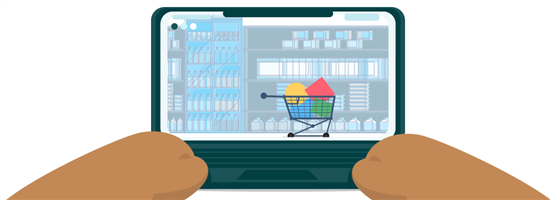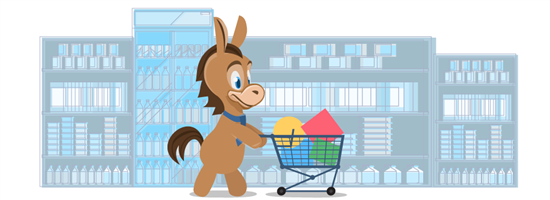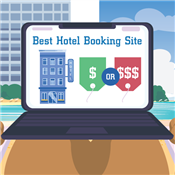Shopping Cart Abandonment Statistics
Online shopping carts are abandoned 75% of the time. Decrease abandonment rates and reclaim revenue with these simple tips.
 |
What Is Online Shopping Cart Abandonment?
Have you ever filled an online shopping cart to the brim, only to change your mind and close your browser? That's online shopping cart abandonment.
It happens more often than you might think. According to SaleCycle, the average cart abandonment rate is 75.6%.
Shopping carts are abandoned for many reasons. Long checkout process or hidden fees, like extra shipping costs, and more. Sometimes, carts are merely wish lists—and customers never intended to purchase the items at all.
Learn why shopping cart abandonment really happens. Also how it can hurt your business, how to prevent it, and how to reconnect with potential customers.
When Cart Abandonment is Happening
Reasons Active Customers Abandon Shopping Carts
How to Prevent Shopping Cart Abandonment
- Prevent browse and form abandonment
- Checkout Pain Points
- Website Optimization
- Security
- Payment Methods
- Shipping
- Returns
Why It's a Problem for Retailers
As a retailer, every abandoned cart is a missed—or delayed—opportunity for revenue.
For online retailers combined, $4 trillion in shopping carts are abandoned. And $260 billion is likely recoverable. Shopping cart abandonment might affect your business more than you think.
Let's take an example. As a business owner, you have 100,000 monthly visitors to your site. Your average transaction is $50. Your conversion rate is 0.75% (or 750 customers). By increasing your conversion rate by just 0.25%, you could earn an additional $12,500 each month—or $150,000 each year.
Shopping Cart Abandonment Statistics Across the Globe
Online shopping cart abandonment rates across the globe are estimated at 75.2%. Most areas hover right around that number, but there are some small differences.
- APAC (Asia and the Pacific Islands), including Japan and China, sees the highest cart abandonment rate at 76.3%.
- The Middle East sees a slightly lower rate at 76.1%.
- Latin America, including South and Central American countries, drops down to a 75.3% abandonment rate.
- North America (US & Canada) is one percentage point lower than the global trend at 74%.
- Europe enjoys the lowest rate of cart abandonment at 70.9%.
Shopping Cart Abandonment Statistics by Industry
The travel industry sees the highest percentage of abandonment because it requires more research. In cases like this, customers are more likely to "just browse".
Think of planning a trip to London. First, you may add two flights to your cart. But before purchasing, you might confirm the layovers with your friend.
The next day, you might comparison shop on other sites. And then wait to see if the prices go down.
Later, you might visit a different site entirely to book the final seats.
The time it takes you to make a decision is called a consideration cycle. Industries with long cycles, like travel and finance, have higher rates of online shopping cart abandonment.
Product Type Matters, Too
A Barclaycard survey breaks it down, listing the top items left in carts. Most are clothing items:
- Women's knitwear
- Leather goods
- Women's lingerie & hosiery
- Headphones
- Watches
- Women's sportswear
- Women's skirts
- Books
- Men's pants and jeans
- Women's tops and shirts
Abandonment Statistics by Device
Small screens can equal big problems. According to Forbes, this is how often users abandon their cart:
- Desktop: 73.1% of the time
- Tablet: 80.7% of the time
- Mobile: A whopping 85.6% of the time
Why does this happen?
Often, sites aren't optimized for mobile. Meaning a clunky, glitchy checkout experience will leave customers running.
Statistics by Browser
Invesp notes sites where your customers find you, matter. Especially when it comes to shopping cart abandonment rates:
- Google: Responsible for 71.2% of all e-commerce site organic traffic. But it only averages a 1.9% conversion rate.
- AOL: Brings in the highest conversion at 2.9%.
- Yahoo: Conversion rate of 2.6%.
- Bing: Has a conversion rate of 2.4%, also higher than Google.
- Facebook and Twitter: Result in 1.2% and 0.5% conversion rates, respectively.
When Is Cart Abandonment Happening?
Customers are most likely to abandon carts between 1 pm and 2 pm, according to SaleCycle data. This may be because office workers may shop during their lunch breaks. But they abandon their carts to return to work.
6 pm to 9 pm also sees a high rate of cart abandonment.
As for day of the week, the weekend is prime time for cart abandonment. Other studies show that cart abandonment is high on Thursdays, too.
Reasons Customers Abandon Shopping Carts
Now you know where, how, and when online shopping cart abandonment is happening. It's also important to understand why.
Unfortunately, a lot of customers are just window shopping. 58% of customers admitted to abandoning a cart because they were "just looking" or "weren't serious about buying."
- 55%: The add-on costs are too high. These include shipping, taxes, and other fees the customer may not be aware of until checkout.
- 34%: Prompted to create an account.
- 26%: The checkout process was too long or too complicated.
- 21%: Couldn't see or calculate their total order cost upfront.
- 17%: Didn't trust the website with their credit card information.
- 17%: The website had errors or crashed.
- 16%: Product delivery was too slow.
- 11%: The returns policy was unsatisfactory.
- 6%: The site didn't offer enough payment methods.
- 4%: Their credit card was declined.
Retailers can do little for customers just browsing. But other fixes can help conversion rates. Retailers can increase these rates by 35% just by improving the checkout process.
How to Prevent Online Shopping Cart Abandonment
 |
| © CreditDonkey |
These tips are data-backed ways to help lower your site's online shopping cart abandonment rates.
Start from the Top
There are two other types of abandonment that happen even before the shopping cart. It's important to dig into these too.
Browser Abandonment
This is when customers look through multiple items, add nothing to their cart, and leave the site. There could be many reasons:
- The customer is just looking.
- The website is hard to navigate.
- Shipping and return information is not clear or is hard to find.
- Product descriptions are vague.
- Website is slow.
Form Abandonment
This is when customers try to sign up for an email newsletter, free offer, or fill out any other form on your site. But they don't complete the form. If your site sees a lot of form abandonment, it could be a sign that:
- Your forms aren't optimized across devices.
- Your forms have glitches, much like checkout.
- You're requiring too much information.
Add-to-cart rates vary across devices. According to eMarketer Retail, that means:
- 12.0% for desktop
- 11.5% for tablet
- 7.6% for smartphones
Comparatively, conversion rates average between 2% and 3% across all devices. But only 1.6% for smartphones.
Fix Checkout Pain Points
A long, clunky checkout process is a huge turn-off for customers. 26% of customers said the checkout process was too long or too complicated.
Is your checkout process easy for customers to complete? Here's a checklist to guide you.
- Do they need to create an account?
- Provide both billing and shipping addresses?
- Enter some information twice?
- Enter a CAPTCHA?
- Is all the information necessary or helpful?
If you answered one or more with yes, you have to work on your checkout. It might be the main reason your customers are leaving.
Here are the most common checkout pain points:
Number of Elements
The average U.S. checkout process, Baymard found, includes almost 24 elements (such as form fields, checkboxes, drop-down menus, etc.). That's a lot. An ideal checkout can be reduced to 12 form elements.
CAPTCHAs
1% or more of users may abandon a cart entirely just because they don't want to attempt to enter the CAPTCHA. While that doesn't sound like a lot, reclaiming just 1% of abandoned carts could result in big bucks.
8.8% of users will fail a CAPTCHA on the first attempt. That number can climb up to 29.9% if CAPTCHAs are case-sensitive.
Account Creation
34% of customers said they abandoned a cart because they were prompted to create an account. To create an account, users typically need to:
- Create a username or enter their email address
- Create a password
- Check a disclosure box
That adds three additional elements to the checkout process. Sometimes, account creation even requires users to check their email to confirm their address, taking them off-site.
Customers are understandably fatigued by account creation. And that can cause them to abandon ship (or cart).
Is it necessary that your customers create accounts before they checkout? And if it's optional, is checkout the best time to ask them to create the account? Customers are already busy trying to find their wallets and fish out their credit cards. Creating an account is just one more hassle that can turn them away.
Forgetting Username and Passwords
18% of retail customers abandon their carts because they can't retrieve their credentials. Sometimes, they're forced to enter into a "forgot username/password" cycle. That can lead to a rise in shopping cart abandonment rates.
Optimize Your Website
Other times, it's problems with the website itself that cause users to give up. 17% said they abandoned their carts because the website had errors or crashed.
Pay attention to these common issues.
Website Speed
Can make a big difference to customers going through the checkout process. According to ReadyCloud, cart abandonment increases by 7% for each second your site takes to load.
Mobile-Specific Optimizations
Is your website optimized for mobile browsing? With a high rate of shopping cart abandonment, it pays to optimize mobile sites.
- Overlays, like pop-ups encouraging customers to sign up for newsletters, can be difficult to click out on mobile browsers.
- Customers visiting your site directly from social media might face additional constraints. Because they're viewing your site in that platform's app. Your analytics can tell you this.
- Headers and footers that look nice on desktop sites can be distracting on a smaller mobile screen.
Increase Security
17% of customers claim they abandoned their cart because they didn't trust the website with their credit card information. Security is clearly important to customers.
Six in 10 customers say they've abandoned their cart because they didn't see a security badge displayed. It's best to choose a security badge familiar to customers, like Norton Secured or Verisign.
Review Your Payment Methods
6% of customers say they abandoned their cart because the retailer didn't offer enough payment methods.
Consider popular payment methods such as:
- Third-party stand-alone payment companies like PayPal
- Device-based wallets like ApplePay
- Retailer-based wallets like AmazonPay; 20% of customers choose AmazonPay over any other digital wallet
Find the Best Shipping Options
55% of customers claim they abandon their carts because add-on costs were too high. These include shipping, fees, and taxes.
Free shipping has become an expectation in the online world:
- High shipping fees account for 25% of all abandoned carts.
- 16% of customers abandoned their carts because shipping speed was too slow.
- 93% of shoppers say they are more likely to make a purchase when retailers offer free shipping.
What Can Retailers Do?
Some retailers choose to offer free shipping. But pass the cost along to the consumer by raising prices slightly.
Other retailers offer free shipping to most customers. They only charge shipping costs for faraway locales. Analytics can tell you where you ship the most.
Another strategy—made famous by Amazon but also popular with retailers like Sephora—is to offer an annual membership that includes free shipping.
A Good Return Policy
Around 11% of customers abandoned their cart because they didn't like the return policy.
- After the 2015 holiday season, retailers reported that free returns led to additional online purchases.
- Again, retail giants lead the way: Zappos and Nordstrom perennially use free returns as a unique selling point.
How to Reclaim Abandoned Carts
 |
| © CreditDonkey |
Even if you make all the necessary adjustments to reduce your online shopping cart abandonment rate, customers will still abandon their carts. That doesn't mean it's over yet.
You can follow up with customers to lure them back to their abandoned carts. This strategy is effective, too.
70% of online customers are more likely to convert after being retargeted.
- Didn't even want to abandon their carts. Remember that 17% of customers cited website errors or crashing as their reason for abandonment.
- Had trouble finding their usernames and passwords.
- Left because the process was too long. They may come back to their carts when they have more time, but they might need a reminder.
To follow up with customers who abandoned their carts, you can use two popular methods below.
Email Campaigns
Yes, it takes resources to craft a personal, on-brand, and convincing email. But it might be worth it. This tool is proven to be effective.
- Nearly half of all shopping cart abandonment follow-ups are opened. That's huge—only 22% of all marketing emails are opened.
- Anywhere from 6% to 13% of cart abandonment emails are clicked. And over 33% of those clicks result in a purchase on the site, according to SaleCycle.
- The average order value (AOV) of purchases from abandonment emails is 19% higher than average purchases.
- Every cart abandonment email sent results in $5 in revenue.
- The best time to send cart abandonment emails is within three hours of abandonment. These emails have the highest open and click-through rates. If your product has a longer consideration cycle, testing email tactics can help determine the best time to send it.
The cart abandonment rate for finance products is among the highest of all industries. But opened email rates are high at 56%, with a 6.6% conversion rate.
Clothing retailers aren't so lucky. Their open rate hovers below 40%, and their conversion rate drops to 3%.
Remarketing: The Ads That Follow You Around
The second method is known as remarketing ads.
If you've abandoned your cart, you might see an ad for the same product. That's a remarketing ad. They can be very effective, but there are factors that influence their effectiveness.
Here are some things to consider before launching such ads:
Cost
Remarketing ads are typically inexpensive, but pay attention to the cost-per-click.
No Email Necessary
Remarketing ads can reach more customers than email campaigns since they don't require emails. You can get to customers who never provided an email.
Not All Customers Receive Retargeting Ads
Google and Firefox allow users to mute remarketing ads on their site (even across multiple devices). Other platforms and browsers may follow suit by adding their own mute buttons. So, it's still unknown how many users will proactively mute remarketing ads.
However, even muted, remarketing ads still account for 27% of ad clicks among Google Search users.
The Bottom Line
Online shopping cart abandonment rates can mean missed revenue for your business.
Now that you understand why customers are abandoning their carts, you can take steps to fix it. Optimizing your site, especially your checkout process, can produce big results.
Check your own analytics to see where customers drop off. Reclamation campaigns are also effective to recover customers who have abandoned their carts.
Write to Emily T at feedback@creditdonkey.com. Follow us on Twitter and Facebook for our latest posts.
|
|
|









